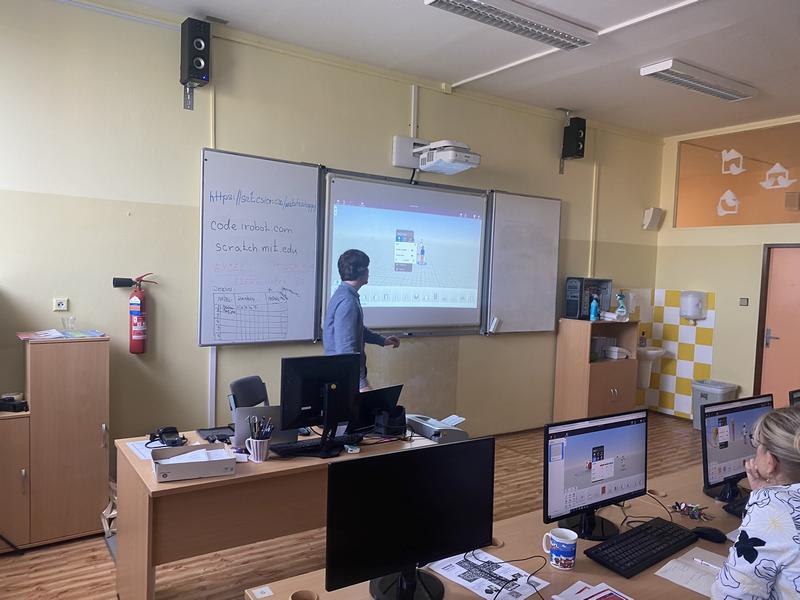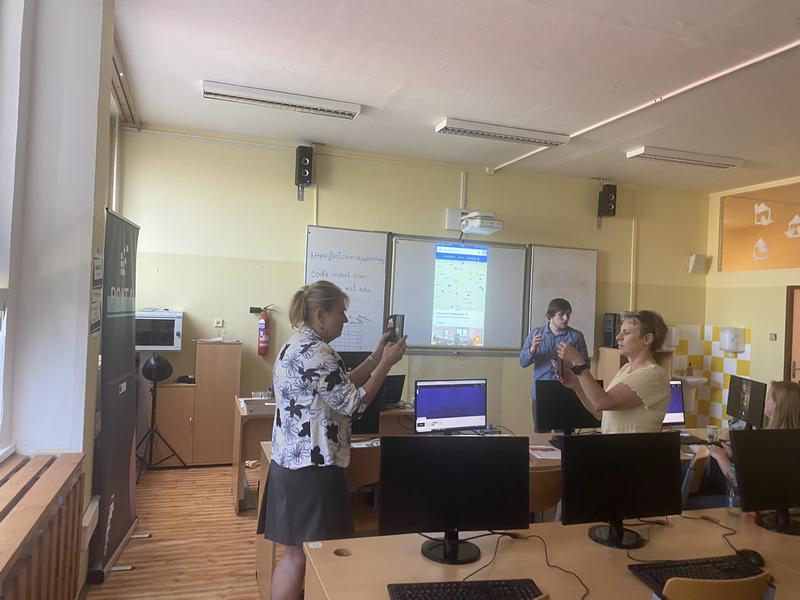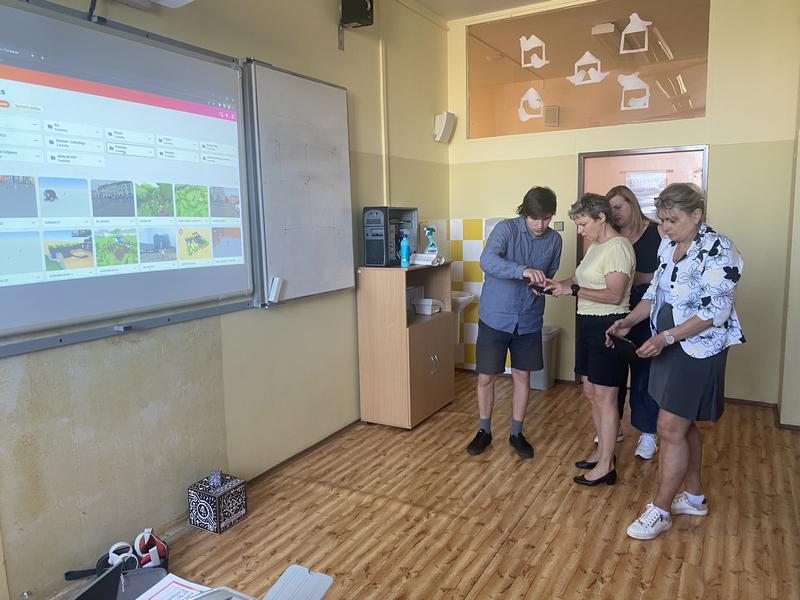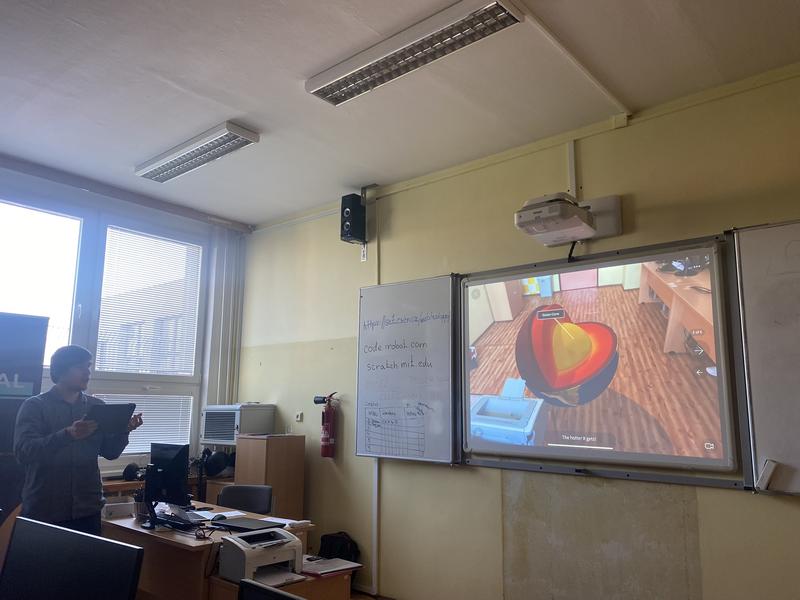On June 3, 2022, our first training in the series How to effectively teach new computer science in 3D with virtual and augmented reality took place. As we have learned, they have not yet completed any training or had much experience with programming. So we made them our unique method of teaching game-based programming. We have shown that programming is not about writing code, but also about inventing algorithms. Within a few hours, they learned in a playful way how to use Cospaces, how to use virtual and augmented reality for presentation, and especially how to pass this knowledge on to children.

We use the Cospaces application to teach programming, in which even children in kindergartens can start programming. We start by learning that children and adults work with 3D models of characters or animals that contain animations. First they learn to work with 3D models in 3D space and then they start to switch animations on characters or animals, so they start to create the first stories of how animals or people behave in the simulation.

An algorithm is created from the story, which is then enriched with other elements. The main advantage of the Cospaces application is the use of 3D Scratch, where you can use blocks to compile a program in a similar form as if we were talking about it in natural language. We are simply looking for blocks that will help us describe the situation we want to simulate. In addition, we can easily test what we program with one click without writing ballast codes. To this we add output to virtual reality, where we can interact with our creations, walk among them in 3D glasses.

Alternatively, use a tablet to view them in augmented reality in the real world.

Which is all, it encourages you to try new and new things, and make more complex programs. In addition, created in Cospaces can be used in all subjects. In a playful way, students can create their own simulations for biology or physics, virtual tours for geography or tell stories.


